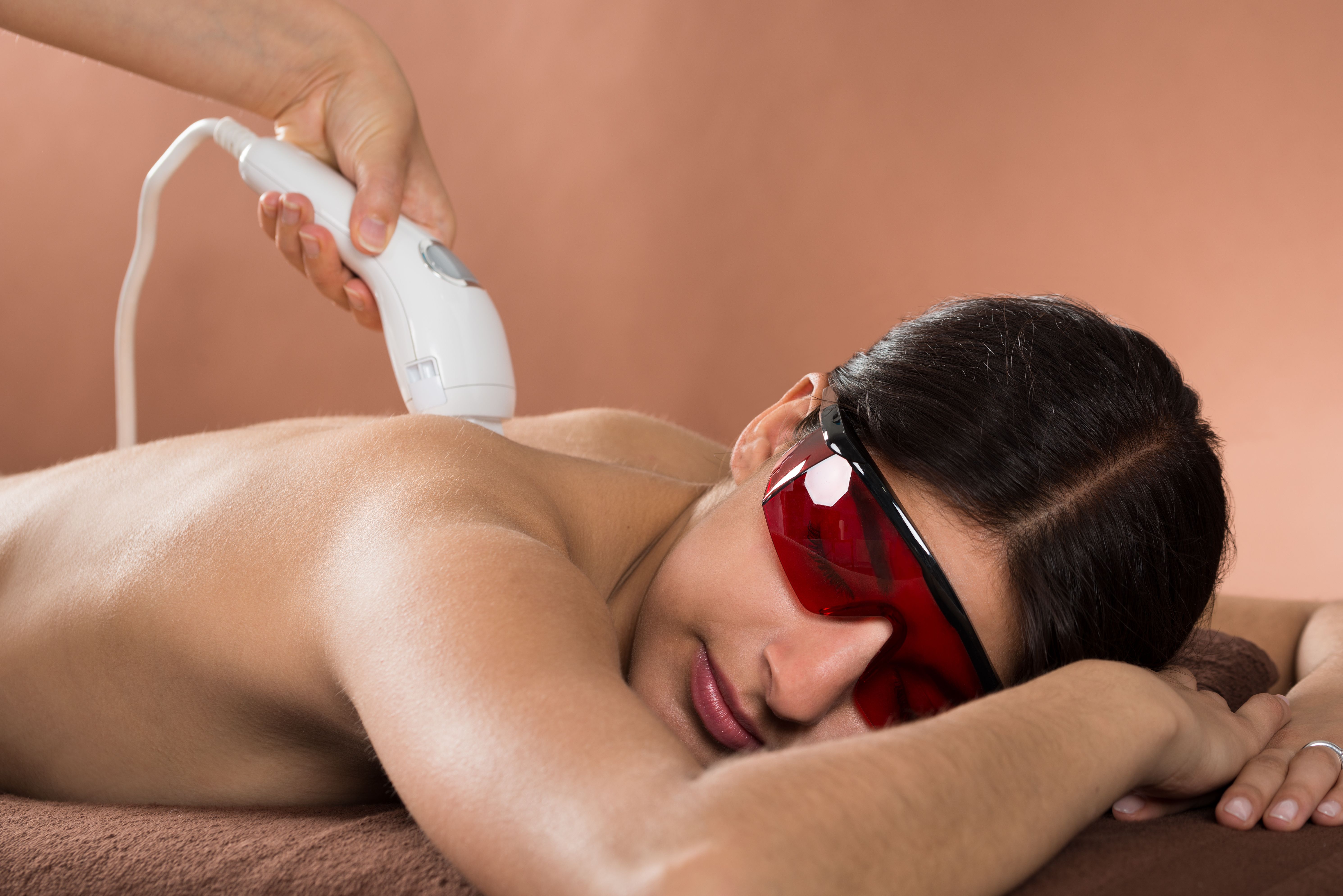- Acne
- Actinic Keratosis
- Aesthetics
- Alopecia
- Atopic Dermatitis
- Buy-and-Bill
- COVID-19
- Case-Based Roundtable
- Chronic Hand Eczema
- Chronic Spontaneous Urticaria
- Drug Watch
- Eczema
- General Dermatology
- Hidradenitis Suppurativa
- Melasma
- NP and PA
- Pediatric Dermatology
- Pigmentary Disorders
- Practice Management
- Precision Medicine and Biologics
- Prurigo Nodularis
- Psoriasis
- Psoriatic Arthritis
- Rare Disease
- Rosacea
- Skin Cancer
- Vitiligo
- Wound Care
Article
Inflammatory acne lesions decrease after three IPL therapy sessions
Author(s):
Intense pulsed light therapy is an effective treatment for severe acne in dark-skinned women, say researchers writing in the Journal of Clinical and Aesthetic Dermatology.
Intense pulsed light therapy is an effective treatment for severe acne in dark-skinned women, say researchers writing in the Journal of Clinical and Aesthetic Dermatology. (©AdobeStock_83008210)

Intense pulsed light (IPL) therapy is effective and safe as monotherapy for the treatment of inflammatory severe acne vulgaris in dark-skinned women of child-bearing age, a study published in the Journal of Clinical and Aesthetic Dermatology has found.
Grades one and two acne lesions (non-inflammatory) can be managed by topical treatment but grades three and four lesions (inflammatory) usually require systemic therapy to prevent scarring.
“Systemic retinoids are considered teratogenic and thus use is discouraged in women of child-bearing age. Also, for individuals with infertility issues, the patients and their treating gynecologists might be reluctant to use any systemic medication, as it might interfere with ovulation,” says author Ajay Deshpande, M.D., from the Maharashtra Medical Foundation Joshi Hospital in Pune, India. As a result, chemical peels, narrowband ultraviolet B light, pulsed dye lasers, intense pulse light therapy and light-emitting diodes have all been tried as treatments for inflammatory acne in women of child-bearing age with varying degrees of success.
This study included 100 female patients aged 21 to 30 years with Fitzpatrick Skin Types four to six with grades three and four acne lesions and no history of herpes simplex or hormonal disorders, such as thyroid disorder or polycystic ovary syndrome.
Transparent gel was applied to the face before intense pulsed light therapy with 530 nm to 1,200 nm filter (Magma-F-SR; FormaTK Systems, Tirat Carmel, Israel) was delivered in continuous mode with 7.0J/cm2 fluence with three milliseconds of pulse width. Six passes were performed over the entire face followed by six passes of two subpulses (double mode) of 14.2J/cm2 (7.1J/cm2+7.1J/cm2) fluence over the lesion only.
Protective eye glasses were worn by both the patient and the treating physician.
Mild erythema and stinging were experienced by all patients. Ice packs were applied for 15 minutes followed to cool the skin and then topical mometasone furoate 0.01% cream and broad-spectrum sunscreen were applied. The erythema and stinging subsided within 30 minutes.
The procedure was repeated every week for six weeks. Seven patients dropped out of the study (found due to intolerance of the procedure and three were lost to follow-up).
Eight in ten patients (74 of the 93) reported good-to-excellent improvement; ten (11%) reported fair-to-good improvement; and a poor response was seen in seven (9%). Assessment of pre- and post-treatment photographs by a blinded assessor confirmed significant reductions in total lesion count as well as improvements in erythema.
Four of the 93 patients who completed the study developed mild erythema after the second treatment session, but this subsided completely after seven days of sunscreen protection. There were no long-term or severe adverse events.
“Intense pulsed light reduces the inflammation and sebaceous gland size and downregulates tumor necrosis alpha, thereby reducing the initial lesion count and preventing the formation of new lesions,” Dr. Deshpande said. “In our study, we found that the lesion count began decreasing after three sessions and continued to decrease until 12 weeks into the follow-up period. Also, the occurrence of new lesions stopped after three weeks of treatment.”
The basic mechanism of action of intense pulsed light therapy is selective thermal damage of P. acnes, which produce and store porphyrin, Dr. Deshpande explained. “Intense pulsed light penetrates into the hair follicles to target P. acnes by triggering porphyrin activation. In telangiectasia and other vascular disorders, intense pulsed light also corrects the dilatation of vessels. This mechanism helps reduce erythema in inflammatory acne, and this was demonstrated in our patients, who displayed marked reduction of erythema after three to four sessions of treatment.”
“Intense pulsed light also has bactericidal activity against P. acnes by triggering porphyrin synthesis. This helps reduce active acne lesions and eruption of new lesions.”
Intense pulsed light was delivered in continuous mode followed by double-pulse mode because of the risk that it might cause post-inflammatory hyperpigmentation and scarring on skin of color if used in single- or burst-pulse modes, Deshpande said. “In both modes (continuous and double), the pulse width was significantly less than the TRT value (>10ms), which improves safety of the treatment, considering the photo-type, without compromising the density of the emitted energy.”
REFERENCE
Deshpande AJ. Efficacy and Safety Evaluation of High-density Intense Pulsed Light in the Treatment of Grades II and IV Acne Vulgaris as Monotherapy in Dark-skinned Women of Child Bearing Age. J Clin Aesthet Dermatol. 2018 Apr;11(4):43-48. Epub 2018 Apr 1.
Newsletter
Like what you’re reading? Subscribe to Dermatology Times for weekly updates on therapies, innovations, and real-world practice tips.











